Reza and I have a friend in Portugal, so an eight hour stopover sounded like a great excuse for a lunch with him. From the airport, we took an Uber to Belém, the south-west corner of Lisbon. It was a beautiful day and after being on a plane for a few hours it was lovely to wander around and enjoy the sun.
We spent some time meandering around the waterfront. The Portuguese were sailors and adventurers and there is evidence of that throughout the country. In an earlier blog about Elephanta Caves, I mentioned that the Portuguese arrived and tried to steal their elephant and smashed up their caves. They also spent a lot of time in Goa, which is why Goan’s could claim Portuguese citizenship! During the 15th and 16th centuries, the Portuguese mapped Africa, Canada, Brazil and Asia. They were bold, they were brave, and they were unstoppable.
The most famous explorer was Vasco da Gama. He died in 1524 and was buried in Cochin, India. In 1539 he was returned to Portugal and he now rests in Jerónimos Monastery.

Pasteis de Belém
Belém is famous, mostly for Pasteis de Belém – Pastry of Belém. It has a shop there that’s been making these since 1837. That’s three years before the Treaty of Waitangi was signed- technically making this pastry shop older than NZ’s sovereignty. Remembering we were there in the off-season and we hadn’t seen many people along the waterfront… this shop was PACKED.
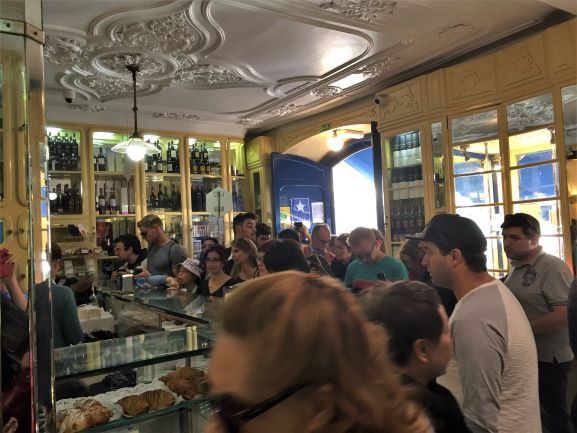 You had to queue just to get in the door, then be jostled in the melee, and thrust your way forward forcefully to the counter. Reza did that while I lounged in the sun (boyfriend of the year award goes to, drumroll please… Reza!) and I was rewarded for his efforts with a dozen of these beauties. Crisp outer pastry shell, filled with sweet gooey velvety custard, with a skiff of cinnamon on top. They are HEAVENLY.
You had to queue just to get in the door, then be jostled in the melee, and thrust your way forward forcefully to the counter. Reza did that while I lounged in the sun (boyfriend of the year award goes to, drumroll please… Reza!) and I was rewarded for his efforts with a dozen of these beauties. Crisp outer pastry shell, filled with sweet gooey velvety custard, with a skiff of cinnamon on top. They are HEAVENLY.

Interestingly, Portugal is famous for its sweets. The story goes that medieval nuns in Portugal used egg whites to starch their habits, and so always had leftover egg yolks. At that time, Portugal, being its adventurous self, had set up a trade route with Brazil and as result had access to a lot of sugar. Together, egg yolks and sugar make about 95% of Portuguese sweets.
A pleasant walk along Belém waterfront
We proceeded along the waterfront, enjoying the fresh air. The Belém Tower was built in 1519 and used to keep an eye on things – part of the maritime defence system of Portugal.
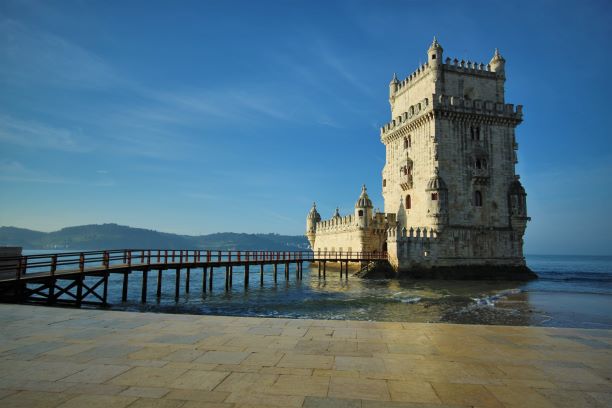

Lisbon
After a delicious fresh crab lunch, we headed into Lisbon itself. As we walked around, I began to feel a sense of camaraderie with Lisbon. In 1755, Lisbon was pretty much flattened by a magnitude 8.5 -9 earthquake. Following that, there was a tsunami and some fierce fires, so there wasn’t a lot left of Lisbon at the end of it. I’m from Christchurch NZ, where in 2011 we experienced a violent ‘megathrust’ earthquake that destroyed an awful lot of Christchurch, and my life in the process… so I can imagine the terror and the devastation.
However, it’s thought somewhere between 10,000 and 100,000 people were killed in Lisbon, and I can’t image the scale of devastation or how a city could ever recover from that. But, recover they did. The King and the Prime Minister got together and decided to rebuild Lisbon to be even more amazing than it was… they were the heros of the time.
It was pretty amazing to be walking through a city and have such a concentrated development- everything was kind of built in the same time period, rather than how cities grow organically. As a result, the majority of the buildings are of a similar architecture and it adds consistency to the look of the city. With its patterned cobblestone roads and colourful buildings, it’s a beautiful city and I was sad to leave after such a short trip.
One thing I loved about Lisbon was that it seemed to embrace modernity. So there’s modern street art next to the historical buildings, endowing it with a real arty bohemian feel. I can see why Lisbon is becoming increasingly popular with tourists.
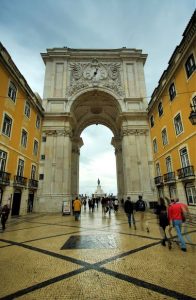

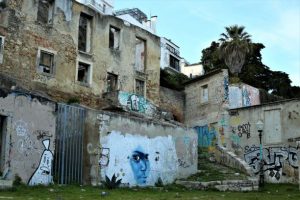
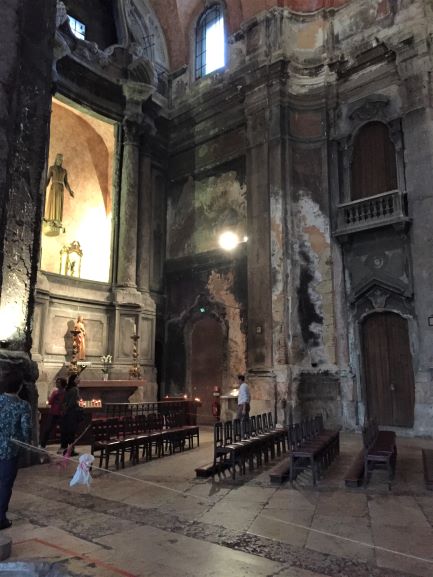
Most people were at church on the day of the shake, so a lot of people died in churches. This one still has the scars of the earthquake, with pitted and dented stone walls. It made it more beautiful. Because of the Roman architecture and pillar design, it withstood the earthquake and the fires afterwards, signs of which you can still see today. As a result, this is one of the oldest structures in Lisbon.



On the day we were there, we noted that the Lisbon train station was missing the 126 year old statue of Dom Sebastiao. He usually hangs out middle front, where the horseshoe doors intersect. However, last year some less-than-intelligent person tried to take a selfie with the statue and knocked him over, smashing the statue into hundreds of pieces. So THAT is why all the priceless statues are locked away in museums… because people are stupid.

So ended our brief fling with Portugal. It’s on my list of places to return to, as the trip was far too brief- although I can’t say I’m in a hurry to try their famous fish dish, salted cod.



